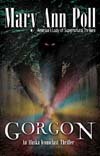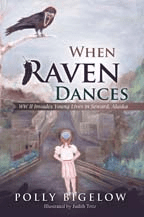Fun Trivia for Curious Readers Who Love Books
Before the term bookworm was a badge of honor proudly worn by those who spend more time with novels than Netflix, it had a far more literal—and destructive—meaning. A long time ago, calling someone a bookworm might have implied they were… well, an actual worm. Or at least as annoying as one.
 Not just any worm, mind you, but the kind that feasted on parchment and bindings the way modern readers devour The Hunger Games or Pride and Prejudice. These so-called bookworms were real insects—beetles, silverfish, termites—creatures that saw your personal library as an all-you-can-eat buffet.
Not just any worm, mind you, but the kind that feasted on parchment and bindings the way modern readers devour The Hunger Games or Pride and Prejudice. These so-called bookworms were real insects—beetles, silverfish, termites—creatures that saw your personal library as an all-you-can-eat buffet.
Let’s travel back a few centuries, to an era when books were scarce, handwritten, and stored in damp monasteries or candlelit chambers. Paper wasn’t acid-free, libraries weren’t climate-controlled, and pests roamed free. The glue in book bindings was especially appealing—often made from starch or animal byproducts, it offered a high-protein snack for hungry larvae.
The earliest record of the term bookworm dates back to the 1500s. At the time, people weren’t romanticizing their love for stories—they were complaining about critters destroying their scrolls and manuscripts. German scholar Justus Lipsius used the term in a letter in 1580, referring to literal pests gnawing through his collection. The English language soon followed suit, eventually softening the insult into a metaphor.
By the 1800s, the shift was underway. The term bookworm began popping up in a new context: describing people who immersed themselves in books so deeply, they may as well have burrowed into the pages. Think of it as a glow-up for insect-based insults.
And this transition makes sense. For many, reading is a kind of quiet obsession. It’s easy to forget the world when you’re caught up in To Kill a Mockingbird or The Name of the Wind. There’s something oddly fitting about comparing a voracious reader to a tiny creature that disappears into the spine of a book and doesn’t come out until it’s done.
Of course, the irony here is delicious—real bookworms destroyed books, while today’s bookworms preserve them with their love.
To this day, librarians and archivists still contend with the real-life versions of bookworms. Paper-loving insects haven’t gone extinct. Museums use airtight cases, humidity control, and even freezing techniques to protect rare books from the jaws of microscopic enemies. If you’ve ever seen a book with small holes punched through multiple pages, chances are you’ve encountered the aftermath of one of these little villains.
So next time someone calls you a bookworm, thank them. But also consider whispering: “Better me than a deathwatch beetle.”
Because let’s be real—being called a silverfish doesn’t quite have the same charm.
Now, what’s even more curious is how language loves a good twist. Plenty of words and phrases we use today have backstories just as strange as bookworm. Ever wondered why we “get cold feet” before a big moment or “bite the bullet” when doing something unpleasant? English is full of expressions rooted in literal pasts, softened over centuries into the idioms we know and love.
Language evolves. So do readers. From dusty monks brushing bugs off scrolls to kids curled up with Percy Jackson under a blanket fort, we all carry the torch forward.
In a way, every reader is rewriting the legacy of the bookworm—trading destruction for devotion.
And if that’s not poetic justice, what is?
Help Us Spread the Word
If this trivia made you smile or taught you something new, why not pass it on? Readers love curious facts—and writers do too. Here’s how you can help:
- Share the post on Facebook or in a book club group
- Forward it to someone who enjoys little-known stories
- Talk about it at your next book club meeting
Invite others to join us here:
https://publicationconsultants.com/newsletter
We’re growing a book-loving community one great story at a time. Your share might be why someone falls back in love with reading—or dares to start writing.




 This is Publication Consultants’ motivation for constantly striving to assist authors sell and market their books. Author Campaign Method (ACM) of sales and marketing is Publication Consultants’ plan to accomplish this so that our authors’ books have a reasonable opportunity for success. We know the difference between motion and direction. ACM is direction! ACM is the process for authorpreneurs who are serious about bringing their books to market. ACM is a boon for them.
This is Publication Consultants’ motivation for constantly striving to assist authors sell and market their books. Author Campaign Method (ACM) of sales and marketing is Publication Consultants’ plan to accomplish this so that our authors’ books have a reasonable opportunity for success. We know the difference between motion and direction. ACM is direction! ACM is the process for authorpreneurs who are serious about bringing their books to market. ACM is a boon for them. Release Party
Release Party Web Presence
Web Presence Book Signings
Book Signings Facebook Profile and Facebook Page
Facebook Profile and Facebook Page Active Social Media Participation
Active Social Media Participation Ebook Cards
Ebook Cards The Great Alaska Book Fair: October 8, 2016
The Great Alaska Book Fair: October 8, 2016


 Costco Book Signings
Costco Book Signings eBook Cards
eBook Cards

 Benjamin Franklin Award
Benjamin Franklin Award Jim Misko Book Signing at Barnes and Noble
Jim Misko Book Signing at Barnes and Noble
 Cortex is for serious authors and will probably not be of interest to hobbyists. We recorded our Cortex training and information meeting. If you’re a serious author, and did not attend the meeting, and would like to review the training information, kindly let us know. Authors are required to have a Facebook author page to use Cortex.
Cortex is for serious authors and will probably not be of interest to hobbyists. We recorded our Cortex training and information meeting. If you’re a serious author, and did not attend the meeting, and would like to review the training information, kindly let us know. Authors are required to have a Facebook author page to use Cortex. Correction:
Correction: This is Publication Consultants’ motivation for constantly striving to assist authors sell and market their books. ACM is Publication Consultants’ plan to accomplish this so that our authors’ books have a reasonable opportunity for success. We know the difference between motion and direction. ACM is direction! ACM is the process for authors who are serious about bringing their books to market. ACM is a boon for serious authors, but a burden for hobbyist. We don’t recommend ACM for hobbyists.
This is Publication Consultants’ motivation for constantly striving to assist authors sell and market their books. ACM is Publication Consultants’ plan to accomplish this so that our authors’ books have a reasonable opportunity for success. We know the difference between motion and direction. ACM is direction! ACM is the process for authors who are serious about bringing their books to market. ACM is a boon for serious authors, but a burden for hobbyist. We don’t recommend ACM for hobbyists.

 We’re the only publisher we know of that provides authors with book signing opportunities. Book signing are appropriate for hobbyist and essential for serious authors. To schedule a book signing kindly go to our website, <
We’re the only publisher we know of that provides authors with book signing opportunities. Book signing are appropriate for hobbyist and essential for serious authors. To schedule a book signing kindly go to our website, < We hear authors complain about all the personal stuff on Facebook. Most of these complaints are because the author doesn’t understand the difference difference between a Facebook profile and a Facebook page. Simply put, a profile is for personal things for friends and family; a page is for business. If your book is just a hobby, then it’s fine to have only a Facebook profile and make your posts for friends and family; however, if you’re serious about your writing, and it’s a business with you, or you want it to be business, then you need a Facebook page as an author. It’s simple to tell if it’s a page or a profile. A profile shows how many friends and a page shows how many likes. Here’s a link <> to a straight forward description on how to set up your author Facebook page.
We hear authors complain about all the personal stuff on Facebook. Most of these complaints are because the author doesn’t understand the difference difference between a Facebook profile and a Facebook page. Simply put, a profile is for personal things for friends and family; a page is for business. If your book is just a hobby, then it’s fine to have only a Facebook profile and make your posts for friends and family; however, if you’re serious about your writing, and it’s a business with you, or you want it to be business, then you need a Facebook page as an author. It’s simple to tell if it’s a page or a profile. A profile shows how many friends and a page shows how many likes. Here’s a link <> to a straight forward description on how to set up your author Facebook page.



 Mosquito Books has a new location in the Anchorage international airport and is available for signings with 21 days notice. Jim Misko had a signing there yesterday. His signing report included these words, “Had the best day ever at the airport . . ..”
Mosquito Books has a new location in the Anchorage international airport and is available for signings with 21 days notice. Jim Misko had a signing there yesterday. His signing report included these words, “Had the best day ever at the airport . . ..”



 The Lyin Kings: The Wannabe World Leaders
The Lyin Kings: The Wannabe World Leaders
 Time and Tide
Time and Tide


 ReadAlaska 2014
ReadAlaska 2014 Readerlink and Book Signings
Readerlink and Book Signings
 2014 Independent Publisher Book Awards Results
2014 Independent Publisher Book Awards Results

 Bonnye Matthews Radio Interview
Bonnye Matthews Radio Interview
 Rick Mystrom Radio Interview
Rick Mystrom Radio Interview When he published those overseas blogs as the book The Innocents Abroad, it would become a hit. But you couldn’t find it in bookstores.
When he published those overseas blogs as the book The Innocents Abroad, it would become a hit. But you couldn’t find it in bookstores. More NetGalley
More NetGalley Mary Ann Poll
Mary Ann Poll
 Bumppo
Bumppo
 Computer Spell Checkers
Computer Spell Checkers Seven Things I Learned From a Foreign Email
Seven Things I Learned From a Foreign Email 2014 Spirit of Youth Awards
2014 Spirit of Youth Awards Book Signings
Book Signings


 Blog Talk Radio
Blog Talk Radio Publication Consultants Blog
Publication Consultants Blog Book Signings
Book Signings



 Don and Lanna Langdok
Don and Lanna Langdok Ron Walden
Ron Walden Book Signings Are Fun
Book Signings Are Fun Release Party Video
Release Party Video
 Erin’s book,
Erin’s book,  Heather’s book,
Heather’s book,  New Books
New Books